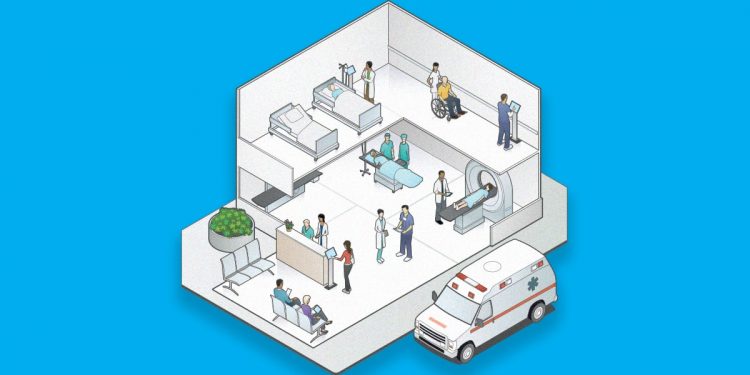With the surge in the incidence of coronavirus, remote practices have come to almost all areas of life. First of all, health systems are faced with the need to use digital opportunities actively. Thus, the use of telehealth skyrocketed. Two in five Medicare beneficiaries started leveraging telehealth services from March 1, 2020, to February 28, 2021. This leap remained stable throughout 2021, even though many providers had resumed in-person office visits.
During the first year of the pandemic, Medicare beneficiaries received over 54.5 million office visits via telehealth and 34 million instances of virtual care services.
But what about the future of telehealth? Will this advancement stay with us after the pandemic?
Telehealth Benefits for the Healthcare Industry
Telehealth provides healthcare workers with convenience, control, cost savings, expanded care access, increased revenue, improved patient satisfaction, and streamlined workflows inside clinical systems.
Telehealth appointments fit better into a patient’s schedule – something patients usually appreciate. In turn, providers can prescreen patients to determine whether they should be seen in person – saving time and securing others from possible infectious diseases.
For hospitals, still, the most crucial benefit of telehealth is cost savings:
- Reduced hospital readmissions. Thanks to telehealth, potential health issues can be discovered and treated earlier, preventing a worsening situation that requires more serious care.
- Increased productivity. Virtual visits not only save time for patients but also for providers. Advanced telehealth technology platforms today provide even better workflows than in-person visits, including integrated digital patient intake.
- Streamlined patient onboarding. Telehealth providers with advanced virtual workflows along with embraced patient portal development, allow their employees to easily connect with clients, begin telehealth video sessions, complete the patient intake process sooner, and alert the provider when it is time to join. Once the provider completes a session, patients are then routed to staff that manages patient instructions, answers their questions, coordinates lab or referral orders, organizes follow-up appointments, and more. These advancements allow medical care providers to avoid the early pain points of telemedicine, where the initial responsibilities of running a session and the burden of the intake process fell directly on providers.
- Reduced number of emergency department visits. With telehealth platforms, patients can access urgent care from home when a hands-on approach is not needed.
The three main components of telehealth are teleconsultation, telementoring and telediagnostics. The last one might be the most crucial one as this single advancement delivers greater detailed physical exams. With telediagnostics, providers can check vital signs, view a patient’s ears, nose, and throat, and conduct ultrasounds and electrocardiograms from a distance. Telediagnostics contribute to the telehealth future providing an online medical examination identical to the offline one.
So will Telehealth Stay With us After the Pandemic?
As we continue to move past the pandemic, one thing has become clear: telehealth is here to stay. As of April 2020, consumer adoption of telehealth rose by 46%, and a sevenfold rate of growth is expected by 2025.
This year, Congress passed the “Consolidated Appropriations Act of 2022,” with “Telehealth Flexibility Extensions” to extend telehealth services due to the pandemic for a period of 151 days past the end of the Public Health Emergency.
These extensions include flexibilities for removing the geographic requirements for the delivery of telehealth, continuing the expansion of practitioners eligible to provide telehealth services, extending telehealth services for federally qualified health centers and rural health clinics not located at the exact location as the beneficiary, removing in-person requirements for mental health services, and allowing audio-only telehealth services and the use of telehealth to conduct face-to-face encounters for recertification of hospice care.
Telehealth is not just a trend brought on by the pandemic. COVID-19 indeed acted as a nudge, but this only accelerated the inevitable. A survey by The American Medical Association and the COVID-19 Healthcare Coalition found that patients do not want telehealth to go away. Seventy-three percent of them will continue to use telehealth in the future, meaning that telehealth will stay with us.
In response to these numbers and the social and market demand, telehealth providers should begin with healthcare software development to provide innovative services to patients.
Healthcare institutions should consider a solution that will help support and streamline their practice, enabling them to provide a safer, higher quality, and more convenient service to patients.
Follow Techdee for more!





